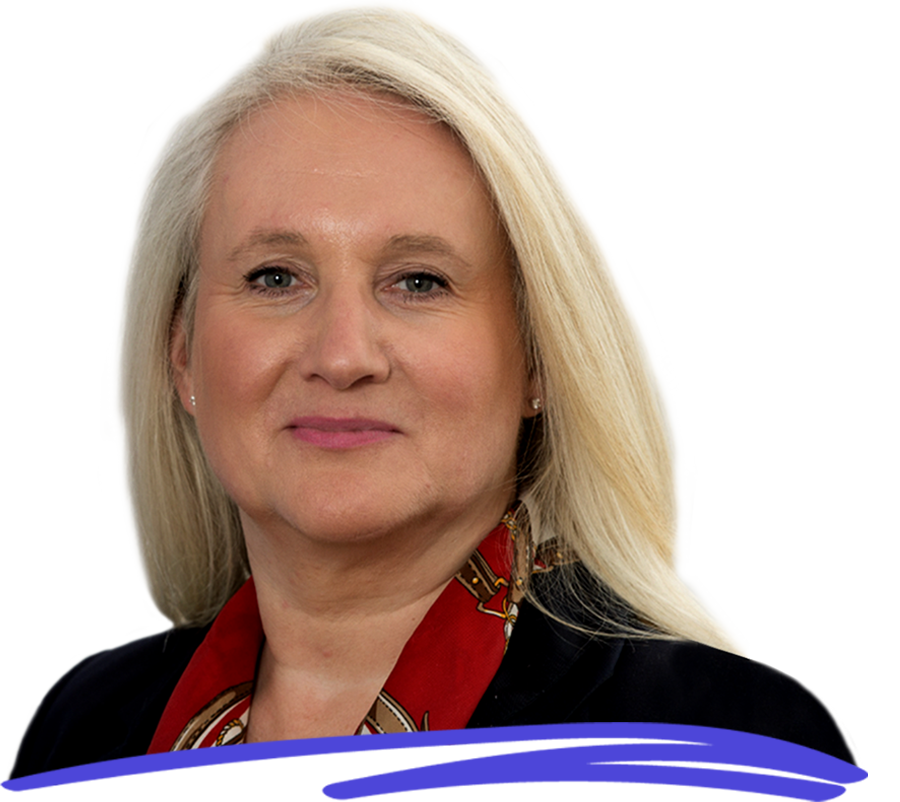Learning
redefined

Gail Boag, Executive Director of Learning, introduces the greatest revamp of syllabus and delivery in ICAS’ history, offering the same rigour and quality, but with greater freedom for student and training firm alike
ICAS unveils its brand-new CA syllabus on 22 March. The changes to the curriculum and delivery method represent perhaps the biggest investment that ICAS has made in its 170-year history – certainly the largest in learning.
Why now? First, digital and online learning have opened up the market. Although we’ve experienced double-digit growth in terms of student intake in the past couple of years, concerns about the attractiveness of the profession, coupled with increased competition, mean maintaining that growth gets harder year on year.
Further, our world is changing, largely driven by sustainability, climate change, AI and social trends, including what the next generation of students expect from a career.
That means it’s an ideal time to refresh the syllabus to reflect those changes. Designed to develop the business leaders of the future, our new CA qualification fosters the mindset, technical knowledge and professional skills that deliver advantage throughout the career of all who achieve it. Leaders who instinctively do the right thing overcome obstacles and create opportunities.
Technology is making the previously impossible possible for ICAS, as well as for everyone else – education has become more accessible to balance personal, professional and training needs.
What it means for students
Our CA syllabus has been designed to keep pace with advances in technology, data and sustainability. These have been embedded throughout the qualification, alongside ethical leadership. It empowers those who achieve it to lead the economies of tomorrow.
It’s relevant and future-fit and aims to develop the core technical knowledge and non-technical skills needed for the workplace, including complex problem-solving, professional scepticism, communication and agile thinking. New, innovative assessment methods, the integration of cloud-based accounting software and Microsoft’s Power BI application further embed learning though application and visualisation.
Firms can create personalised, more role-relevant learning journeys for their students with the new in-depth electives in Advanced Tax, Data Analytics, Innovation for Growth and Transformation, and Sustainability for Accountants.
As the only provider to share three years’ worth of schedules in advance, the CA is structured over three new levels, starting with Knowledge, leading to Skills, and concluding with Integration, with its multi-disciplinary case study. To complete their training, students will also need to have worked and logged a minimum of 450 days of relevant practical experience.
The new qualification has been designed with a scaffolding approach to allow students to move successfully through the programme, gradually applying and focusing support as students first encounter and then master new concepts. Combined with engaging digital content and active classroom learning, both of which embed understanding, it aims to enable positive student outcomes.
It’s not just about a new syllabus. We want to take it further. On 9 September, we’re holding our first ever national, in-person induction event in Edinburgh – the first step to deeper levels of student engagement. We want to build student communities and support networks and offer an unrivalled student experience. For many, study will be a mix of online and in class, so it will be increasingly important for people in those networks to speak to each other and learn from their peers.
We will continue the rollout of the new curriculum throughout 2024. By 2025, the old curriculum will have been phased out entirely.
What it means for firms and members
At the start of this process, we embarked on a comprehensive engagement programme which was delivered through a series of firm roadshows. This engagement helped us to shape the new syllabus and our new agile delivery model to meet the needs of our students, members and firms. This demand-led approach ensures we put our customers first and that our offering is tailored to their needs.
More recently, Vice President Karen Scholes CA and I have been going around Scotland, talking to small and medium-sized practices. In the past, it was said we did not pay enough attention to our smaller practices and authorised training offices (ATOs). This has been a great opportunity to hear about their challenges and understand the differences in their businesses compared with the bigger firms, helping us to meet the needs of all, not just the few. This includes our clients in industry too.
That’s why we have developed a unique structured flexible approach to delivery that gives firms and their students the certainty to plan, and the freedom to fit ICAS around different business needs.
And creating different pathways, along with a different delivery model, is of huge benefit for the smaller firms.
What it means for ICAS
We can safely say nobody else in the market is doing what we’re doing. None of them will be able to replicate our model of four terms per calendar year, creating such flexibility for firms and students.
It’s not just about financial investment. There has been an immense investment of time and effort across ICAS. It wouldn’t have been possible without that collective will through every department.
Once the delivery model and new CA qualification land on 22 March, we’ll turn our focus to improving the ATO experience, developing a new CPD portfolio and expanding our pathways into the profession even further. All of which will help us deliver on the commitments made in ICAS 2030: Together, we will.
ICAS is evolving – but what won’t change is the CA qualification’s high levels of professionalism, integrity and excellence for which we’ve long been known.
The CA is a challenging qualification. We don’t apologise for that and it will continue to test the aptitude of all who undertake it – making sure the talent we help to develop will indeed be the very best there is.
Read a summary of what’s changing for the new syllabus





